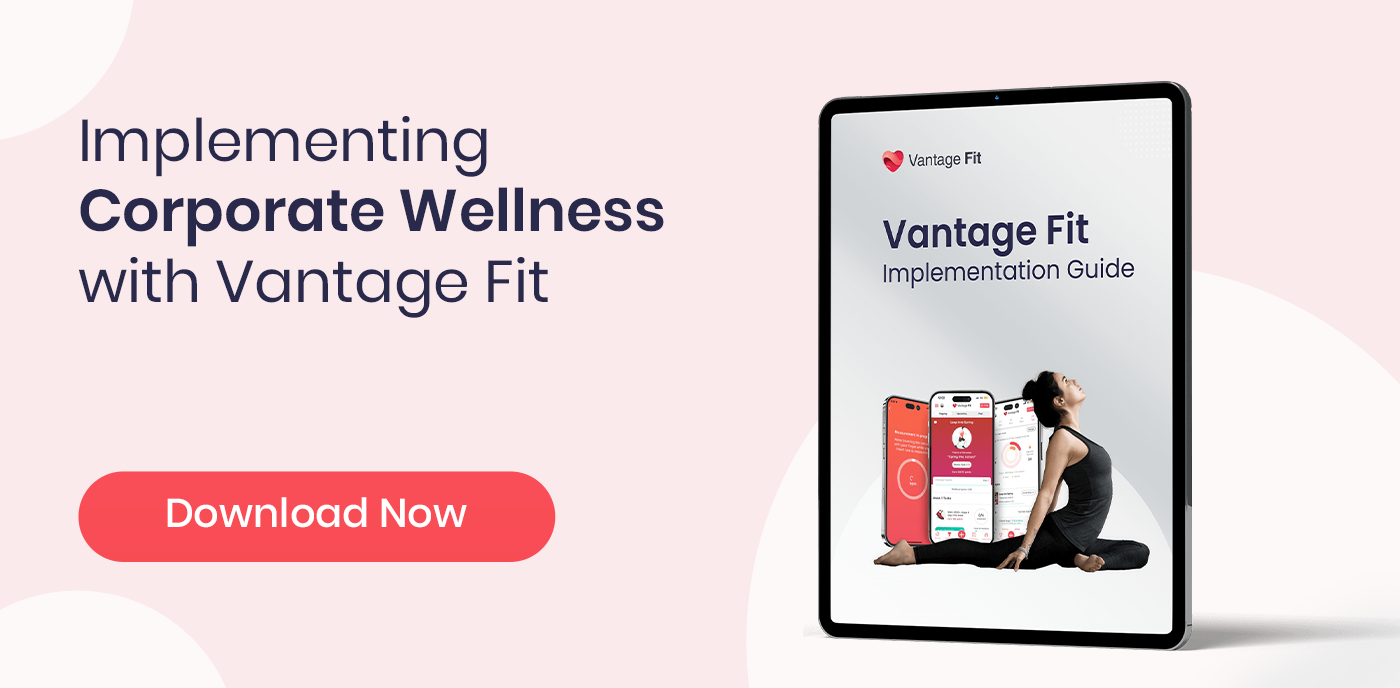Supporting Gen Z Mental Health in the Workplace: A Guide for Employers
Generation Z, often defined as individuals born approximately between 1997 and 2012, represents the most connected and socially-environmentally conscious generation globally. This is the generation raised beneath the blue glow of a phone, scrolling in bed long after midnight and soul-searching in endless comment threads!
As social psychologist Jonathan Haidt puts it,
Gen Z became the first generation in history to go through puberty with a portal in their pockets that called them away from the people nearby and into an alternative universe that was exciting, addictive and unstable.
Yet beyond social feeds, the challenges cut deeper. They’re bombarded by bad news before breakfast, see job security replaced by “hustle culture,” and inherit global problems from climate change to economic upheaval—all while being told to just “manifest” happiness.
It’s no wonder that nearly 83% of Gen Z workers say burnout hits them at work, and 42% have already been diagnosed with a mental health condition before their mid-20s. Alarming, isn’t it?
But there’s something powerful happening here, too: Gen Z is vocal.
These ‘digital natives’ are refusing to be silent and are bringing mental health front and center, demanding open, real talk at work. They seek a workplace that sees the whole person, leadership that responds rather than recites, and policies that feel like support.
Dear employers, the message is clear: Gen Z wants open convos, honest policies, and a work culture where a thriving generational wellness is standard. This guide has everything you need to keep Gen Z on your squad—no cap.
Let’s dive in.
🧠 Gen Z Workplace Wellness Checklist
A quick guide for HRs and leaders to build a workplace that supports authenticity, flexibility, and mental well-being — the way Gen Z defines it.
- ✅ Dedicated Mental Health Days: Offer at least 1–2 paid recovery days each quarter, separate from vacation or sick leave.
- ✅ Flexible Work & Boundaries: Respect “offline hours.” No emails or pings after work; create meeting-free focus blocks.
- ✅ Trained Managers: Equip every manager with mental-health ally training and open-dialogue playbooks.
- ✅ Accessible Therapy Options: Provide six free sessions per year with licensed therapists — virtual or in-person.
- ✅ Transparent Workload: Encourage open conversations about workload and track it visibly to prevent burnout.
- ✅ Growth Without Burnout: Redesign promotions and growth paths to support rest, flexibility, and energy check-ins.
- ✅ Psychological Safety: Build confidential channels for feedback and ensure every concern gets a timely response.
💬 Pro Tip: Gen Z values authenticity above all. Make wellness real — not performative. Start small, be consistent, and listen actively.
Why Gen Z's Mental Health Needs Are Different (Not Just "Weaker")
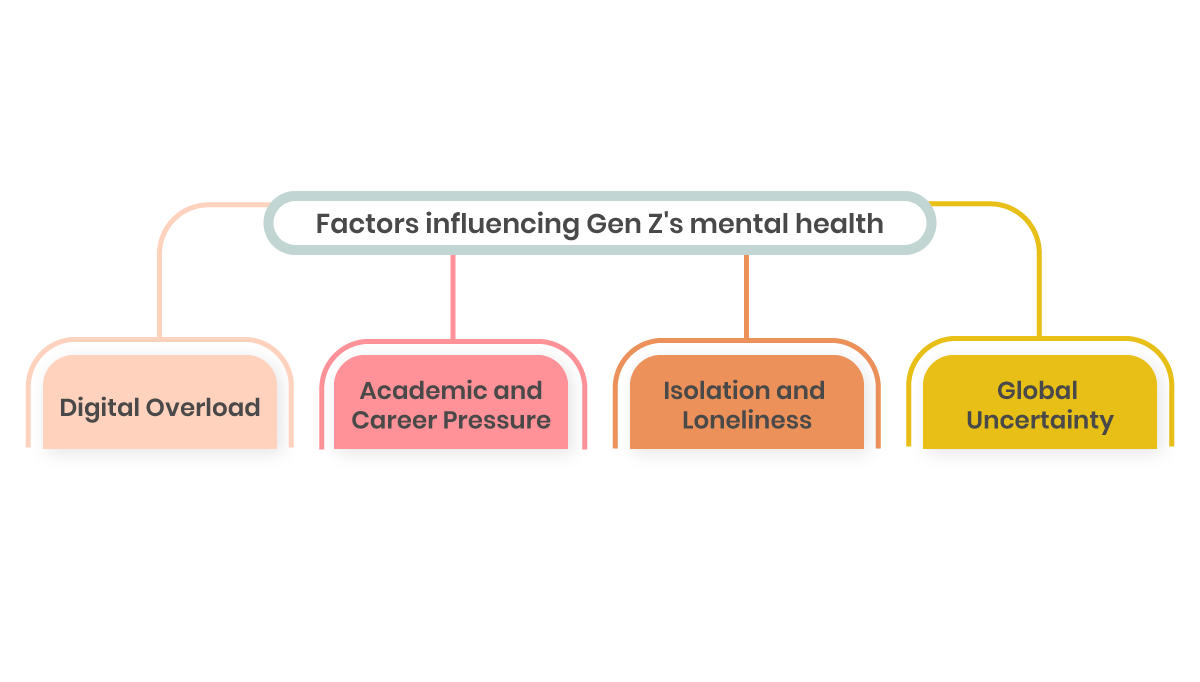
Gen Z is, by both accident and design, the earliest settlers of a digital landscape, and it shapes them at every layer. Unlike Millennials, who experienced a transition into digital technology, Gen Z has never known a world without these tools.
They also are the most racially and culturally diverse cohort in U.S. history, with nearly half identifying as people of color, and inclusion is not a slogan but a self-evident right in their worldview.
For them, identity is a canvas, and they choose to paint it with colors of humanity.
What truly sets Gen Z apart is not technology alone, but their deep insistence on authenticity. They seek out things that feel real. This spills into their values: a devotion to mental wellness and transparency that previous generations often avoided, either due to stigma or the old-fashioned stoicism of “just get over it.”
Gen Z has little patience for such posturing. They talk openly about going to therapy, struggling with anxiety, and asking for help.
IIM Ranchi associated with Vantage Fit to organize a 3 days virtual walkathon addressing a noble cause. The campaign's central theme was to raise people's voices for the transgender community and promote gender equality.
Core Values That Shape Their Mental Health Approach

- Authenticity and Transparency
As mentioned above, Gen Z values authenticity above all else. They have normalized having ‘mental health’ conversations from an early age. They don't attach shame to seeking help because they've grown up in an environment where discussing mental health is considered natural and necessary.
Gen z mental health statistics show that 87% of Gen Zers believe they are the best generation at discussing mental health, compared to only 35% of Millennials who give themselves that distinction. This openness isn't just talk—37% of Gen Z have worked with a mental health professional, significantly higher than Gen X (26%) and Baby Boomers (22%).
- Social Justice and Collective Responsibility
Gen Z's approach to mental health is deeply intertwined with their commitment to social justice and systemic change. 32% are regularly engaged in activism, and 51% have participated in rallies or protests. They understand that mental health challenges often stem from broader societal issues—from climate anxiety to economic instability—rather than individual failings.
Their activism extends to mental health advocacy, where they push for reduced stigma, improved access to services, and systemic changes that address root causes rather than just symptoms. This generation views mental health as both a personal and collective responsibility, advocating for changes that benefit everyone rather than seeking individual solutions in isolation.
The United Nations’ Global Coalition for Youth Mental Health once stated,
We are in a time of crisis — from geopolitical conflict to climate anxiety, mental health struggles to economic uncertainty. It can feel as though we are caught in a constant storm of challenges, with little control over the forces shaping our world.
- Work-Life Integration Over Traditional Success
Unlike previous generations who often prioritized climbing the corporate ladder, only 6% of Gen Z say their primary career goal is to reach a leadership position. Instead, 89% consider a sense of purpose essential to job satisfaction and well-being, and 75% prefer hybrid or remote work arrangements.
Source: Deloitte's 2025 Gen Z and Millennial Survey
This shift reflects a fundamental reframing of success that prioritizes mental health and personal fulfillment. Gen Z values work-life integration rather than the traditional work-life balance, seeking roles that align with their values and allow for flexibility. They're willing to change jobs if their mental health needs aren't met, with studies showing they're more likely to leave positions that don't support their well-being.
Now, let’s find out the mental health expectations across generations:
When Mental Health Expectations Collide Across Generations
| Generation | Openness About Mental Health | Attitude Toward Seeking Help | View on Stigma |
|---|---|---|---|
| Silent Generation | Guarded and private; mental health rarely discussed openly | Seldom seeks help; self-reliance and silence seen as strength | Strong stigma; mental health concerns viewed as personal weakness |
| Baby Boomers | Increasing willingness; more conversations within close circles | Reluctantly open; will seek help if absolutely necessary | Stigma diminishing, but lingering caution and reservations remain |
| Generation X | Pragmatic and more open; acknowledges stress and burnout | Views help-seeking as practical, especially for work-life balance | Stigma fading; skepticism gives way to acceptance when needed |
| Millennials | Normalizes open dialogue; sees mental health as vital to wellbeing | Therapy considered self-care and proactive, not reactive | Low stigma; vulnerability and support actively encouraged |
| Generation Z | Very open and public; uses advocacy and social media for awareness | Proactively engages support; values peer and community resources | Minimal stigma; challenges shame, promotes inclusion and dialogue |
For Gen Z, talking about mental health is just real life. They grew up swapping anxiety memes, sharing panic attack stories on TikTok, and expecting mental health days to matter as much as sick days.
To them, openness is the baseline. A recent SHRM survey found that 61% of Gen Z workers would think seriously about leaving their jobs for better mental health benefits, and nearly all new graduates want mental wellness to be an everyday conversation at work, not a crisis-only confession.
But when young people lean in—hoping for a candid chat about burnout or therapy—they often find themselves running into a wall built long before they arrived.
For Baby Boomers and Gen Xers, those fluorescent lights illuminated different rules: what happened in your head stayed there. Vulnerability was risky, and needing help could brand you as unreliable, or worse, unfit for leadership. The silent legacy of “don’t ask, don’t tell” lingers in break rooms and board meetings, even as cultural winds shift outside.
What Gen Z is Really Saying:
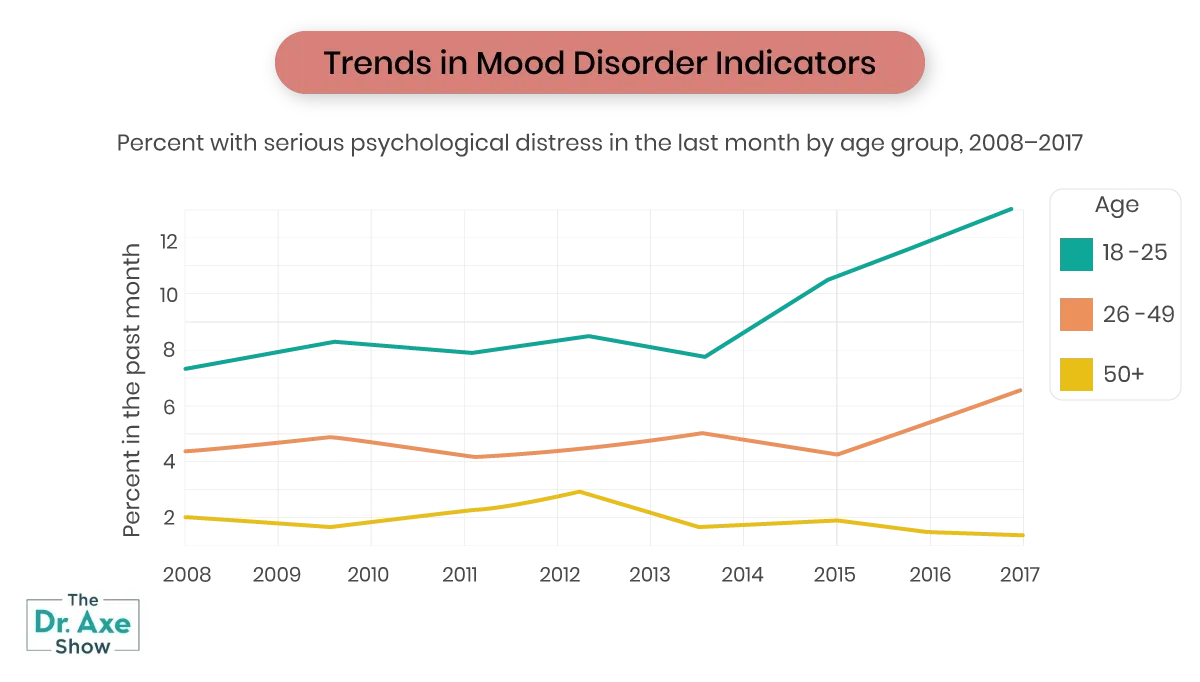
Source: HealthMatch
My biggest concern is the amount of turmoil that exists in the world, and which is seemingly getting worse. We have one large existential crisis after another and I think the challenge is everyone is exhausted with having to be resilient…we’re not truly able to solve the issues we’re faced with. Instead, we put a plaster on it and inevitably the problem comes back bigger. This unrest and turmoil then plays out in the financial markets, in the economy, in politics and this coupled with the climate crisis—is making everyone more stressed than ever before.
– Matt, 29, UK, One Young World ambassador (Deloitte survey)
Honestly, the biggest strain on mental health at work right now comes from feeling like upper management lacks real direction. It can be discouraging when leadership seems fixated on “AI” or other trends without clearly explaining what this actually means for employees or the organization. When communication centers on buzzwords instead of purpose, it sometimes feels as if people are being overlooked or even replaced. Meanwhile, relying on wellness apps or meditation tools as a catch-all solution can feel superficial, especially if it doesn’t address larger issues like clarity, recognition, or job security. No app can solve the stress of feeling undervalued or uncertain about your future at work. What’s needed is a clear sense of vision, honest communication about changes, and reassurance that employees matter in shaping where the company is headed. Otherwise, well-being perks risk coming across as performative rather than supportive.
- a response we received in the Vantage Fit’s Gen Z Mental Health at Work Survey
Now, let’s learn about the strategies that can support their health:
7 Evidence-Based Strategies to Support Gen Z Mental Health at Work
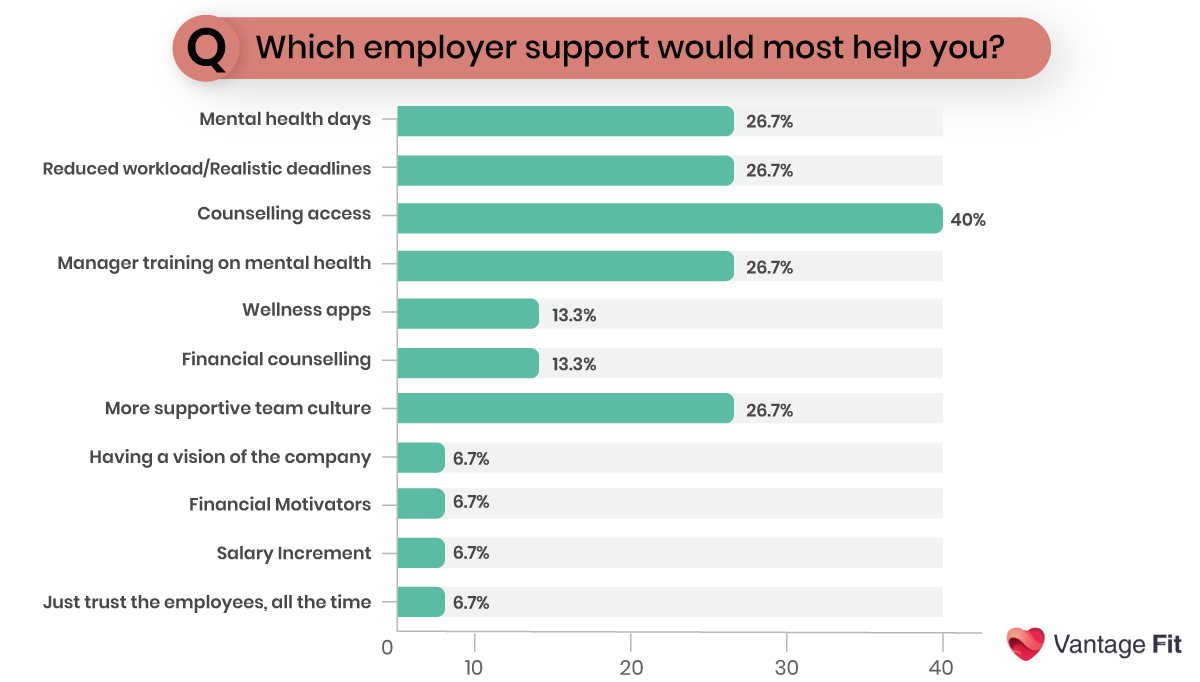
Gen Z enters the workplace with a clarity—and a set of terms—that older generations rarely imagined. They are direct about their mental health struggles and do not mask them with euphemisms. For them, the pursuit of psychological safety is an act of clear-eyed survival. And they expect their employers to understand this.
81% of Genz's have already left or considered leaving a job for mental-health reasons. Gallup pegs the productivity bill for unchecked mental distress at $47.6 billion a year in the United States alone. Against that backdrop, the expectations that follow are not “demands.” They are the cost of keeping young talent in-house.
Below, I have listed the top evidence-based strategies on how to support Gen Z mental health at work:
1. Designate Dedicated Mental-Health Days
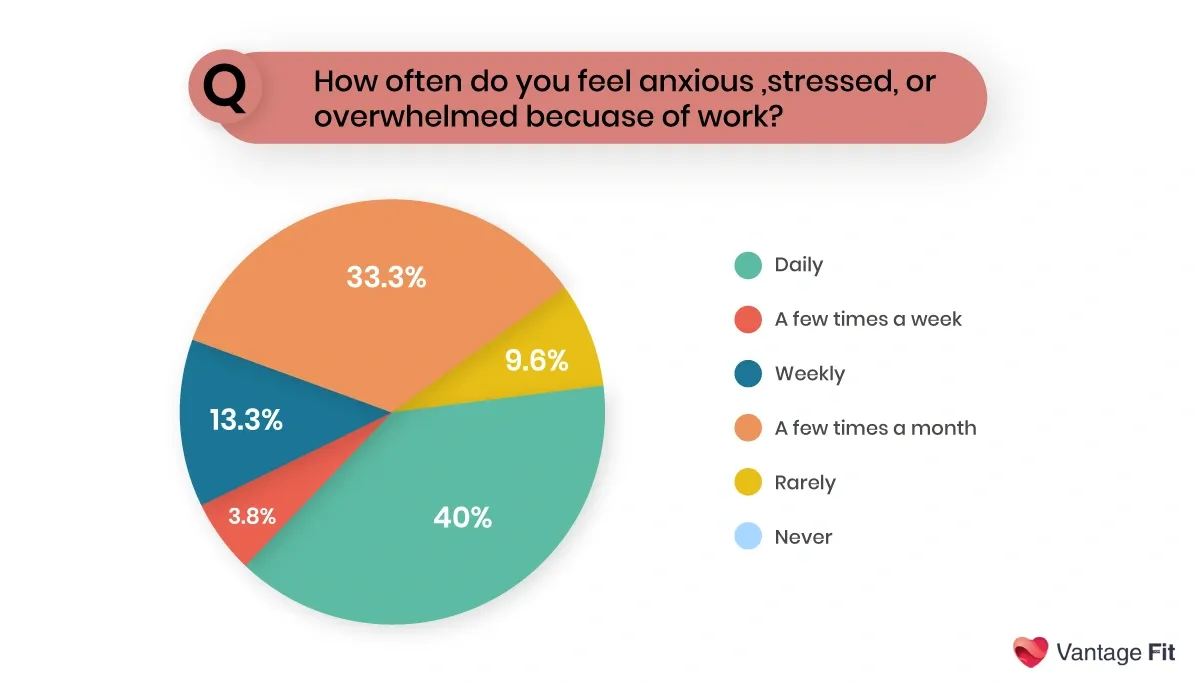
Gen Z distinguishes between “vacation” and recovery time. They see right through time-off policies posing as wellbeing washing. A national survey of 763 workers found that 50.5% of women and 46.3% of men rate mental-health days as “absolutely important,” with usage highest in the under-30 cohort.
For instance, Pinterest designates one company-wide “Brain-Care Day” per quarter. HR tracks same-week output and reports a 9% spike in code deployments after each pause (internal case shared at 2024 Mind Share Partners summit). Works like a charm every time!
How to Implement:
- Create a new policy offering 1 or 2 paid mental health days off each quarter specifically for improving mental health, separate from vacation or sick days.
- Offer two formats: (a) employee-chosen floating days, and (b) quarterly company-wide shutdown (“collective pause”).
- Block calendars automatically; turn off internal chat/notifications during collective pauses.
Managers should also use these days and discuss them openly, so staff feel comfortable following suit.
- Don’t ask people to give reasons for taking a day—just make sure staffing is covered.
- Afterward, ask for quick feedback—just a couple of questions on how people feel.
Success Metrics:
- Watch for at least a 5% increase in metrics such as projects completed or sales generated over the next few days.
- Are people using it? At least 60% of Gen Z staff should take a mental health day within a year.
- For every $1 spent, aim to show at least $4 in savings or added value.
2. Provide Flexible Working Options — With Respected Boundaries
Work-from-anywhere means little if it’s just working all the time.
For Gen Z, work/life balance outranks every other job-selection factor, as per Deloitte’s 2024 survey. 51% say long hours and 44% say lack of control over where or how they work are major stressors.
The constant ping of after-hours emails and blurred work-life lines is eroding their sense of control. And for a generation raised on technology, the stress isn’t in the tools—it’s in the sense that there’s no off-switch!
A midsize SaaS firm lets each team pilot its own “focus hours” grid—meeting-free blocks that overlap even across time zones. Ninety days later, voluntary overtime had dropped 17%, while customer-ticket closure time improved 11% (company KPI dashboard, 2025).
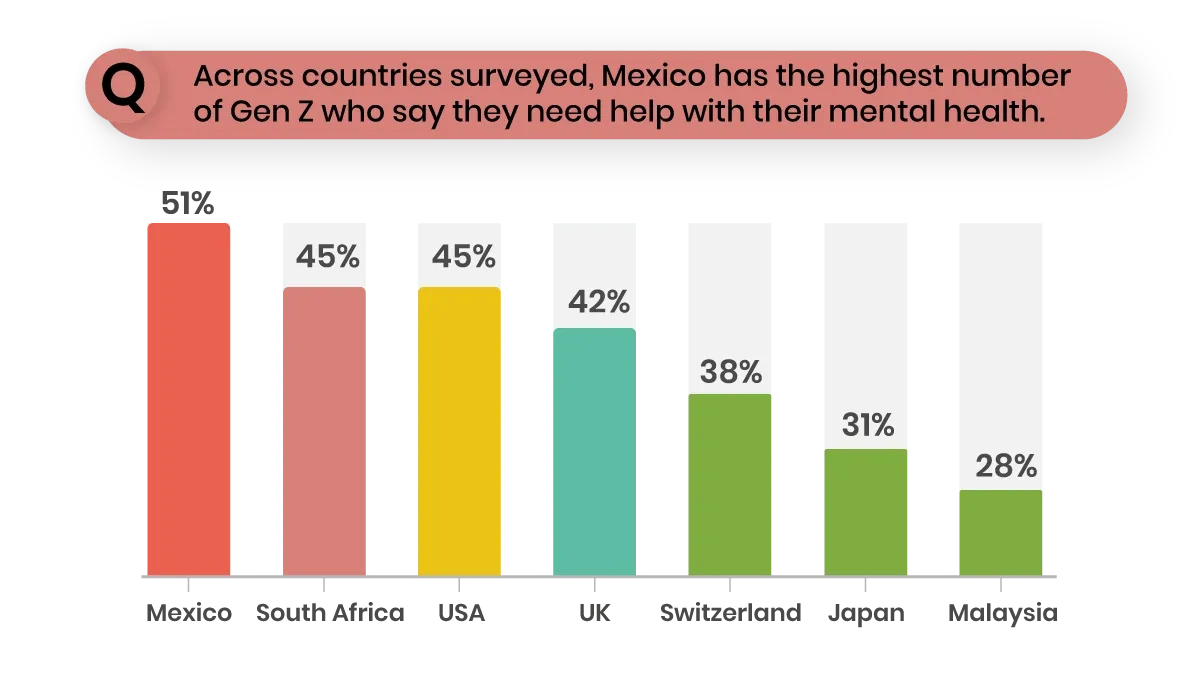
Source: UNICEF PERCEPTIONS OF YOUTH MENTAL HEALTH REPORT 2025
How to Implement:
- Give teams control to set their own “focus hours”—regular meeting-free blocks, aligned across time zones where possible.
- Define company-wide “offline hours” (e.g., no email or chat after 6 p.m. or on weekends); set up auto-replies and silence notifications system-wide during these times.
- Offer flexible scheduling: micro-shifts, compressed weeks, or “do not disturb” work windows.
Success Metrics:
- At least a 60% reduction in after-hours emails and messages within three months of implementing defined offline hours and system-wide notification silencing.
- A minimum 20% increase year-over-year in Gen Z employees reporting “my company respects personal time” on internal surveys, reflecting genuine improvement in work-life balance.
- Changes in reported stress levels and presenteeism in quarterly pulse surveys.
- Improved self-reported work-life balance (quarterly survey).
3. Train Your Managers

Few things rupture Gen Z’s trust more than a manager who fumbles a cry for help.
Deloitte and Mind Share Partners’ research shows that only 22% of managers are trained to talk about mental health issues. For Gen Z, whose experience makes these conversations routine, encountering a supervisor who cannot— or will not—listen is a warning sign.
The vocabulary gap is acute: One in three Gen Z employees say they have felt punished or sidelined after raising wellbeing concerns, leading to a culture of silence rather than openness.
Meanwhile, we, at Vantage Fit, put a lot of emphasis on managers’ role in employee mental health. We have surveyed employees working across different sectors. Care to give it a read? Tap here.
How to Implement:
- Make mental health training mandatory for every manager—no exceptions. Use high-impact programs like Mental Health First Aid, focusing on real-world conversations and spotting early distress.
- Provide role-play scenarios and scripts. Use brief guides that prompt open, stigma-free dialogue.
- Hold managers accountable by tying supportiveness to their performance reviews and soliciting anonymous feedback from their teams.
Success Metrics:
- Achieve 100% manager completion in mental health ally training within six months.
- Reduction in grievances or complaints linked to manager interactions.
4. Facilitate Real Access to Therapy
Gen Z expects support to be easy, confidential, and stigma-free—app-based, on-demand, and never walled off to a single hotline that nobody answers.
While most organizations boast about youth mental health resources, McKinsey’s 2024 data reveal that less than 40% of Gen Z find these supports usable or trustworthy. Many cite labyrinthine systems, lack of anonymity, or fear of career backlash as reasons for removing themselves from actual help.
HR professionals interviewed in Romania observed the gap as well—even in companies with attractive benefits, uptake is low if support remains hard to find or carries social risk. Source
In McKinsey’s Future of Wellness Research, Warren Teichner and coauthors mention that Gen Z outspends older consumers on mindfulness-related wellness products such as meditation classes, mental wellness apps, and therapy sessions.
Going by this fact, if companies still fail to provide the minimum therapy support, it’s a huge letdown.
Minimum viable offering must include:
- Six free sessions per year with licensed therapists (virtual or in-person).
- Zero copay for evidence-based digital CBT apps.
- Clear, mobile-friendly map of how to book both services.
How to Implement:
- Guarantee at least six fully covered sessions per year with licensed therapists—accessible virtually or in person, as the employee chooses.
- Create a simple, mobile-first guide—with one-click dashboard or a QR code—that transparently shows how to book both types of support.
- Communicate and enforce data anonymity, ensuring employees that using these services will not affect their evaluation or advancement.
- Seek honest feedback and make changes accordingly.
Success Metrics:
- Within the first quarter, ensure most Gen Z employees are aware of the therapy options and can access support with minimal steps.
- By six months, track a steady increase in employees booking at least one therapy session, with positive feedback on how easy and confidential the process is.
- See that the majority of Gen Z who use these services say they’d recommend the experience to a coworker.
5. Be Transparent about Workload
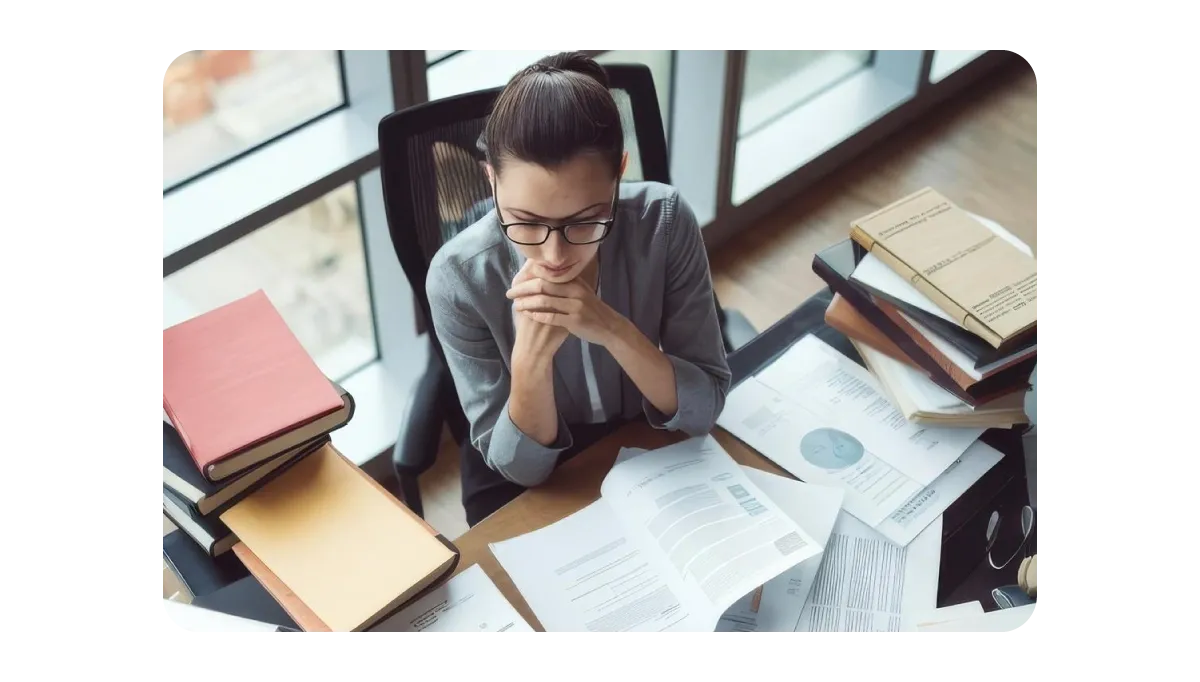
Unspoken expectations are gasoline for anxiety. Gen Z wants regular, transparent talk about workload, not “How are you holding up?” asked only after the team’s already burning out.
Mind Share Partners’ 2025 report highlights that sixty-two percent say workload is the heaviest source of their daily stress.
For them, silence itself is a breach of duty. They’re less likely to “just tough it out”—why should they, when precedent proves it’s unsustainable?
How to Implement:
- Make honest workload conversations routine. Set up regular team check-ins where everyone knows what’s on their plate and what’s coming—so stress never catches people by surprise.
- Use a shared digital tracker or board to make assignments, expectations, and deadlines clear to all. If someone’s nearing overload, flag it fast. You can also opt for distributing the work as per skill level. Or realign goals.
- Encourage speaking up: let employees know that flagging heavy loads early is responsible, not weak.
And always ask for honest feedback regularly on whether people feel overloaded, and act on what you hear.
Success Metrics:
- Over the next six months, watch for a noticeable rise in employees openly discussing workload challenges during check-ins.
- Each quarter, expect to see emergency overtime and late-night work continue to drop, aiming to cut such incidents in half by year’s end.
6. Implement Growth Paths that Don’t Cost Well-Being
The old playbook—equating grind with ambition—no longer inspires loyalty. KPMG’s 2024 Intern Pulse Survey shows that 68% of Gen Z will turn down a promotion if it comes at the cost of their mental wellbeing.
Advancing without structure or safety nets isn’t valorized anymore. They are rather seen as self-sabotage sanctioned by the company. Forward-thinking companies are already designing career pathways that protect both ambition and well-being:
KPMG has invested in restructuring busy seasons and introduced proactive rest policies, such as two firm-wide week-long breaks each year and energy check-ins during high-stress periods. Moreover, Levi Strauss & Co. blends virtual therapy, behavioral health plans, and career development programs, enabling employees to chart their course without sacrificing their health.
How to Implement:
- Redesign career ladders to include explicit rest times. Practice a no-shaming attitude towards your employees when they feel overwhelmed or taxed.
- Integrate regular energy and health check-ins before, during, and after peak work cycles. As mentioned above, approve their leaves without questioning them. It's their leave, they can do whatever they want with it.
- Showcase flexible schedules and health-forward role models at every level.
- If someone moves into a more intense position, make sure their workload is adjusted and their support systems are visible, not just available on paper.
Success Metrics:
- Quarterly surveys should show fewer employees declining advancement due to health concerns.
- Aim for a 20% reduction in burnout-related turnover.
- Track usage of support programs—uptake of therapy, wellness coaching, and structured breaks—year over year.
A study cites,
These individuals (Gen Z) are characterized by flexibility and independence; they are more open to diversity compared to previous generations, learning to accept differences related to religion, social class, race, or ethnicity. (They) are (also) pragmatic, and ... manage to avoid more successfully the barriers related to cultural differences in the professional environment, compared to previous generations.
The above statement is important because this generation is very broad-minded and constantly seeks ways to combat stigma and injustice. So, when you want to create a workplace that welcomes Gen Zs, ensure to think like them. Talk to them to understand their mindset. Effective communication can help curb many issues.
After all, generations are just people belonging to different age groups. They are all humans at the end of the day. The basic concepts of talking, listening, being understanding, righteous, and empathetic will never go out of style.
7. Ensure Psychological Safety by All Means
Despite the prevalence of “Speak Up” and “Wellness” campaigns, half of Gen Z still say airing their mental health concern feels risky to their future. Proper psychological safety, in their eyes, means visible action: intake followed by follow-through, not theater.
While researching, I went through a lot of public forums. One such comment hit me in the gut. It said,
We’re expected by our peers and our elders to be better, but no one knows exactly what “better” is anymore. We’re constantly trying to put our voices out there, to make ourselves heard so that progressive change can happen but are then pushed down by some guy in their 50s for being “young, ignorant, inexperienced and uneducated.
If such issues aren’t acknowledged or resolved, trust evaporates.
How to Implement:
- Build multiple, well-publicized channels for confidential reporting of mental health concerns—including anonymous hotlines, peer liaisons, or digital portals.
- Commit to rapid, visible responses: every concern raised should be acknowledged within 48 hours, with a clear roadmap toward resolution.
- Educate the previous generations on inclusivity and diversity.
- Celebrate “speaking up” as a workplace value. Recognize teams and leaders who champion openness and stigma-busting.
Success Metrics:
- The number of employees reporting they feel “safe” to disclose stress or mental health struggles should increase each quarter.
- Psychological safety scores on engagement surveys should trend up; look for a drop in turnover related to unresolved workplace conflict or stress.
A research paper sums up Gen Z’s job expectations in just one sentence. The paper states, “the main (overall) aspects that Generation Z representatives consider when looking for a full-time job are: “opportunities for career growth, generous pay, making a difference or having a positive impact on society, structured/stable work environment/job security, good healthcare benefits/insurance, flexible hours/remote work options".

The Google memo incident highlights the challenges companies face in balancing open discussion with protecting employees from bias. When the memo’s author questioned diversity efforts, some saw it as free speech, while others felt it perpetuated harmful stereotypes. Google’s decision to fire him reflected its priority on maintaining an inclusive, respectful workplace, but also revealed the difficulty organizations face defining acceptable speech. The case makes clear that clear policies and careful, context-driven responses are essential for supporting both open dialogue and a genuinely safe environment.
Supporting Gen Z’s Mental Health Pays Off- Act Now
Gen Z shows up at work expecting something simple: honesty. A workplace that listens and adapts, without making openness feel risky or awkward.
That’s why at Vantage Fit, we make room for real breaks, and picking up on feedback from our new Gen Z joinees (like Ananya’s) — are a must.
When Ananya joined our mostly Millennial team, nothing was staged—her voice quickly re-centered us on what wellness means.
Our client stories say the same - At Landmark Group, employees reported that Vantage Fit “made healthy routines something everyone wanted in on, not just the wellness buffs” and saw a 34% jump in activity. One BWC Real Estate leader kept it simple: “It’s real. Not another thing you feel you should do. People just join in—and they keep coming back.”
Dr. Zeinab Hijazi, Mental Health Global Lead at UNICEF, encapsulates the urgency of this shift in perspective, saying,
Mental health must no longer be treated as a side effect of global disruption; it must be part of how we respond, recover, and reimagine our future.It’s time to ensure that the mental well-being of Gen Z is central to our workplaces and broader societal transformation.
Don't let another talented employee walk away because you waited too long to act. Our wellness platform helps companies create the authentic, flexible work culture Gen Z actually wants.
Schedule your demo and start retaining your youngest talent today.
Frequently Asked Questions
1. Are Gen Z the most stressed generation in the workplace?
Yes, Gen Z reports the highest workplace stress. Roughly 46% feel anxious most of the time at work, with many diagnosed with mental health conditions before age 25.
2. Why does Gen Z struggle with mental health?
Gen Z faces intense financial stress, constant digital exposure to bad news, and jobs that rarely let them unplug. Openness about mental health is high, but so is the real distress.
3. How does workplace culture influence Gen Z's mental health?
Culture determines everything. Ignored boundaries increase burnout. But supportive, inclusive environments where they feel heard boost both engagement and performance significantly.
4. How can employers help Gen Z navigate the mental health stigma in professional environments?
Train managers properly, treat mental health like physical health, provide confidential support access, and celebrate leaders who openly champion employee well-being.
5. How does Gen Z’s social media usage impact their mental health in the workplace?
Constant scrolling creates attention fragmentation and anxiety. Many spend more time on phones than sleeping, making workplace focus and disconnection nearly impossible.
